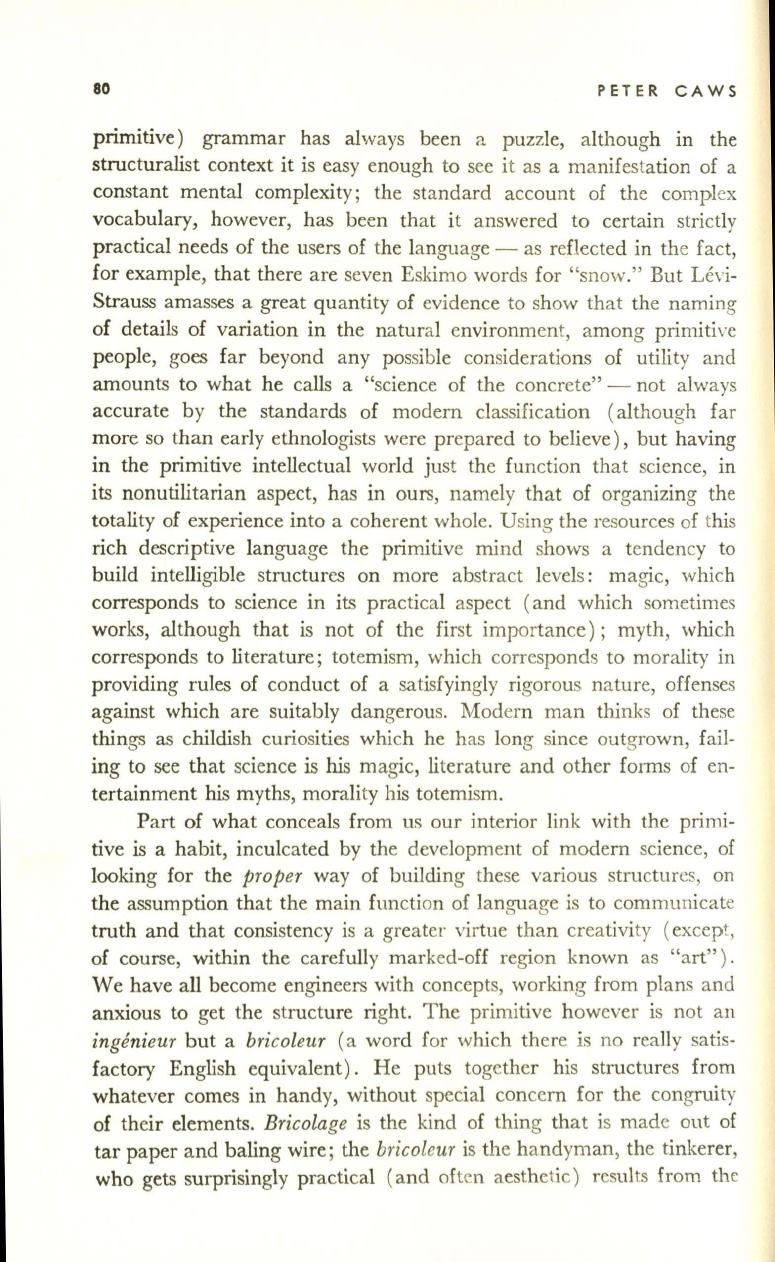
80
PETER
CAWS
primitive) grammar has always been a puzzle, although in the
structuralist context it is easy enough to see it as a manifestation of a
constant mental complexity; the standard account of the complex
vocabulary, however, has been that it answered to certain strictly
practical needs of the users of the language - as reflected in the fact,
for example, that there are seven Eskimo words for "snow." But Levi–
Strauss amasses a great quantity of evidence to show that the naming
of details of variation in the natural environment, among primitive
people, goes far beyond any possible considerations of utility and
amounts to what he calls a "science of the concrete" - not always
accurate by the standards of modem classification (although far
more so than early ethnologists were prepared to believe), but having
in the primitive intellectual world just the function that science, in
its nonutilitarian aspect, has in ours, namely that of organizing the
totality of experience into a coherent whole. Using the resources
of
this
rich descriptive language the primitive mind shows a tendency to
build intelligible stmctures on more abstract levels: magic, which
corresponds to science in its practical aspect (and which sometimes
works, although that is not of the first importance); myth, which
corresponds to literature; totemism, which corresponds to morality in
providing rules of conduct of a satisfyingly rigorous nature, offenses
against which are suitably dangerous. Modem man thinks of these
things as childish curiosities which he has long since outgrown, fail–
ing to see that science is his magic, literature and other forms of en–
tertainment his myths, morality his totemism.
Part of what conceals from us our interior link with the primi–
tive is a habit, inculcated by the development of modem science, of
looking for the
proper
way of building these various stmctures, on
the assumption that the main function of language is to communicate
tmth and that consistency is a greater virtue than creativity (except,
of course, within the carefully marked-off region known as "art").
We have all become engineers with concepts, working from plans and
anxious to get the stmcture right. The primitive however is not an
ingenieur
but a
bricoleur
(a word for which there is no really satis–
factory English equivalent). He puts together his stmctures from
whatever comes in handy, without special concern for the congmity
of their elements.
Bricolage
is the kind of thing that is made out of
tar paper and baling wire; the
bricoleur
is the handyman, the tinkerer,
who gets surprisingly practical (and often aesthetic) results from the


